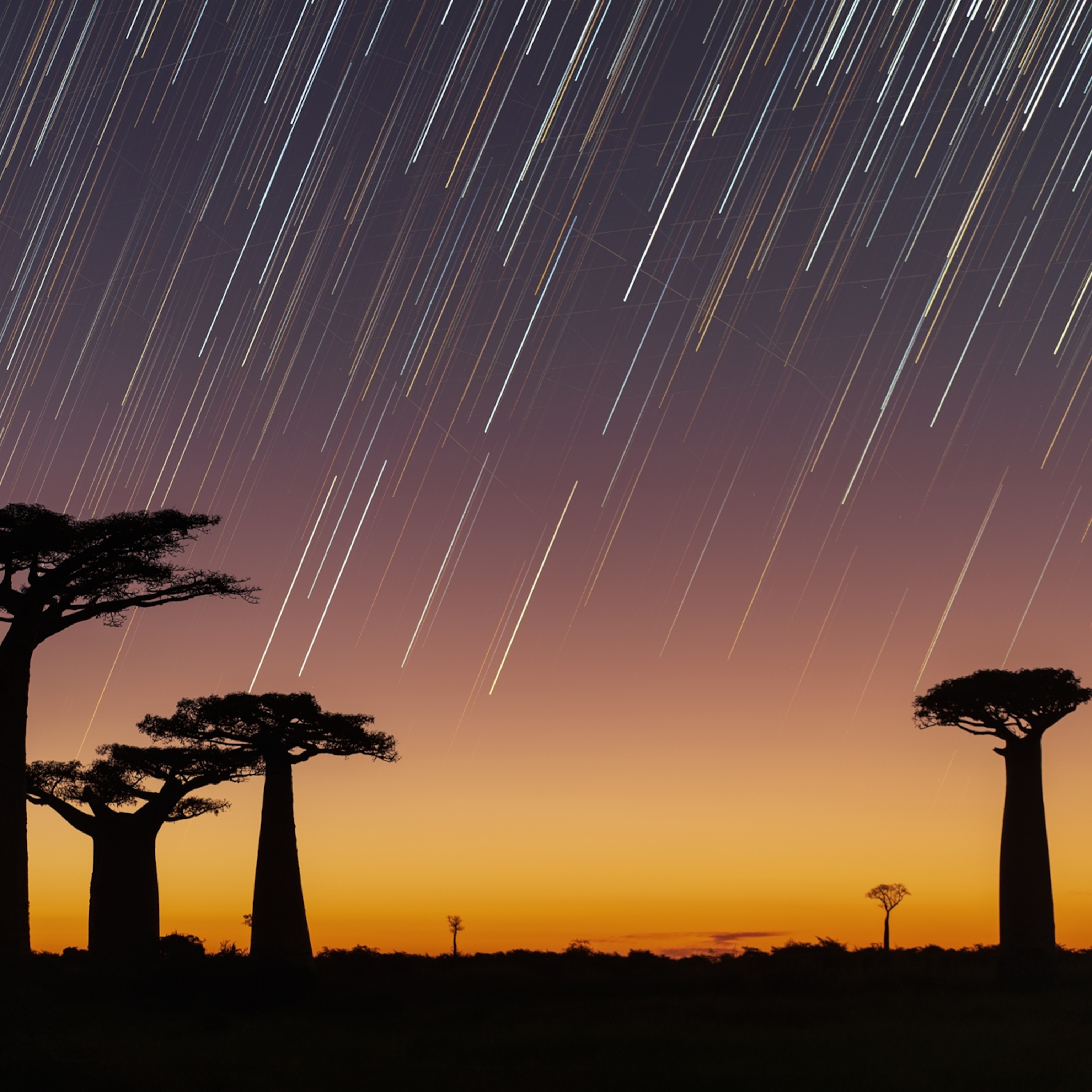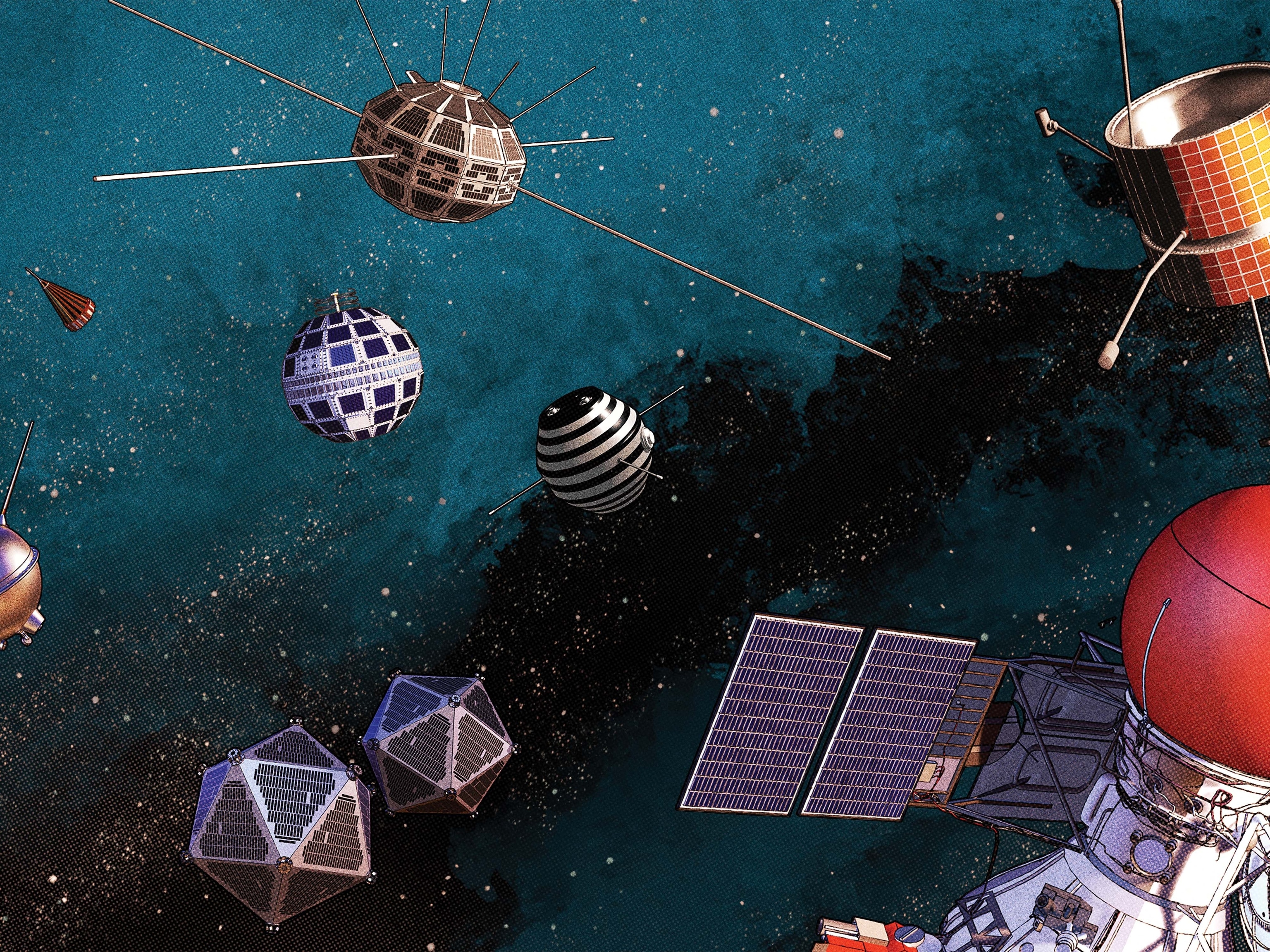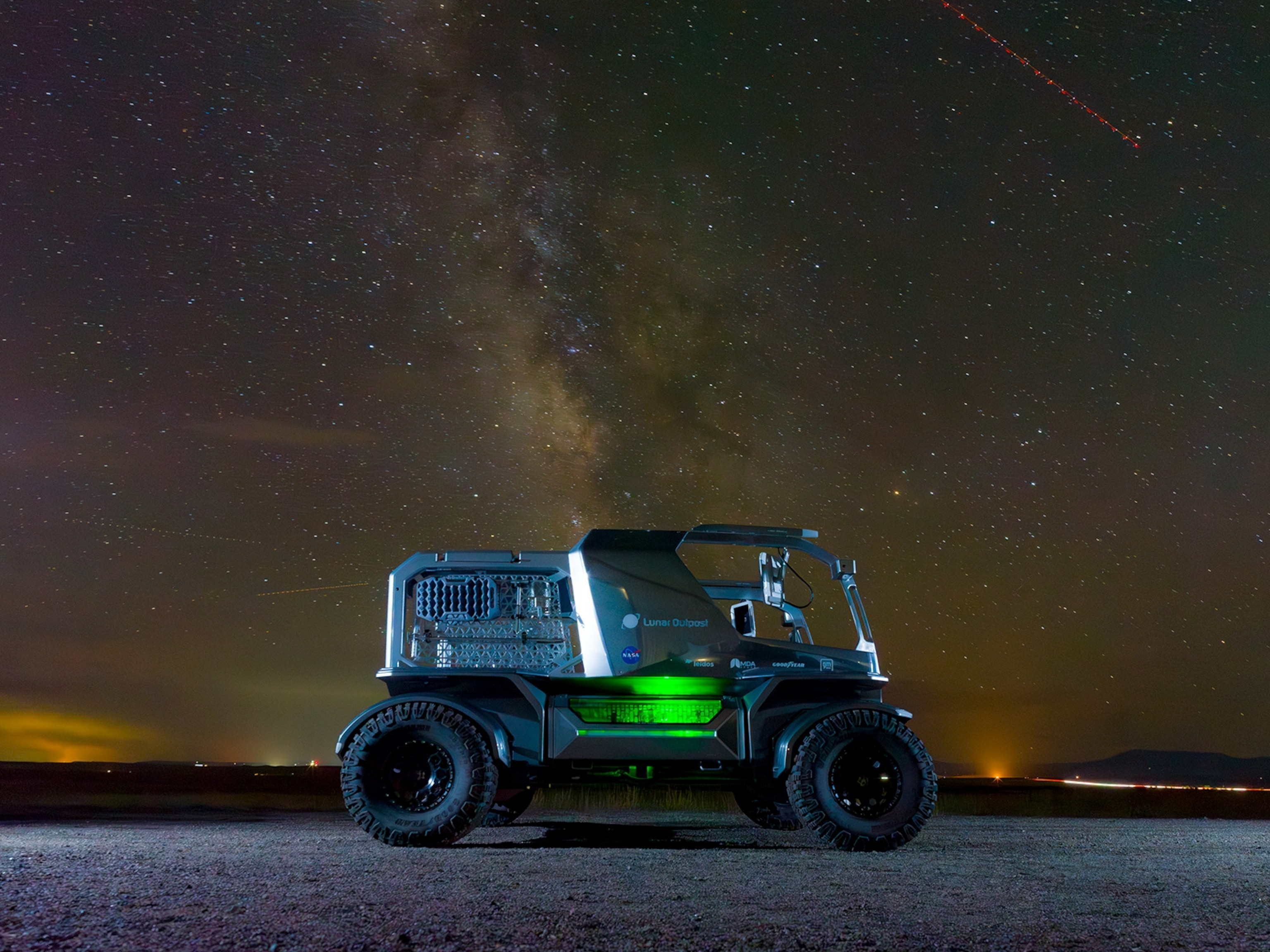The most iconic images in space history have been ‘remastered’. Here’s what they’ve revealed
Andy Saunders is a go-to guy for restoring photographs that seem beyond hope. A new book reveals what happened when this British imaging specialist turned his hand to humanity's ultimate adventure.

There are few adventures in human history so photographically charismatic as those of the Apollo missions to the moon. The weird, cinematic sterility of metal and sunlight in a vacuum; Slatted footprints in grey dust criss-crossing terrain unmolested by wind; spacesuits with mirrored visors distorting views of an alien world, and of our own. Then there are the interiors: tired-looking men in orderly-white fatigues or iconic two-tone skull-caps, regarding grey instrument binnacles studded with switchgear that looks part computer, part heavy bomber.
Also famous are the photographs’ physical qualities. Almost invariably they were square-format slides of cool, crisp Kodak shot on modified Swedish cameras through precise German lenses—or else stills captured from grainy 16mm movie reels. It’s an aesthetic as iconic as the missions themselves—and their reproduction over the decades has made them a part of history’s visual vernacular.
(Related: A brief history of moon exploration.)
But however much you think you know the Apollo images, such was the wealth of material the astronauts captured during the nine missions to—and six landings on— the moon, most have only seen a fraction of the material that came back. And never has it been seen quite like the images in the book Apollo Remastered by British image restoration specialist Andy Saunders.


History sealed away
“The original flight film from the Apollo missions is some of the most important and valuable film in existence. It’s also extremely delicate,” says Cheshire-based Saunders, whose restoration work specialises in space photographs, in an email to National Geographic (UK). Produced by Eastman Kodak and shot on stripped-down Hasselblad cameras, to save weight a special thin emulsion was used on the 70mm film, and as a result, Saunders says, it “should be handled as little as possible. So as soon as the [film] magazines returned from the Moon, a master duplicate set was made.” This was inevitably followed by duplicates of duplicates, and with the emergence of scanning technology, digital copies of digital copies.
(Related: The bizarre drama behind a pinch of moon dust that just sold for $500,000.)
According to Saunders, the original film’s frailty—and its consequent protection from both the elements, and advent of technology—has given the public a somewhat low-resolution view of Apollo. “The original photographic film has remained hermetically sealed in a frozen vault in Houston for almost 50 years,” he says. “Everything we’ve ever seen before has been based on lower quality duplicates of this film.”
Saunders adds: “With each generation there’s a degradation in quality. So some of the most important images in history are being seen by an increasingly bigger audience in a progressively worse state. This causes me immense frustration.”
Utilising this frustration, along with newly digitised scans of the original film and thousands of hours of work (using NASA’s open-source image policy “which allows access to anyone with the inclination, time and skills to undertake a project like this”) Saunders has produced a chronology filled with uniquely impactful, familiar-but-not images of so-far the only crewed missions to the moon. And it’s not just the iconic photographs that fell under his gaze.
Hidden depths of detail
Saunders says his aim was to enable people “see exactly what the astronauts saw,” and present a historical document packed with images with a fidelity as close to the real scene as possible. Authenticity was paramount: Indeed, Saunders says it was part of his process to seek out the only people who would know if he’d succeeded. The consensus was affirmative, with Apollo 16 commander Charlie Duke calling the images “an exact representation of what I remember from my journey” and Apollo 8’s Walter Cunningham, who examined the photographs, describing them as “just incredible.”
(Related: Apollo 8's commander reflects on the sights and sounds of the space age.)
The new scans of the original slides, Saunders says, were the revelation. “There’s so much goodness in them,” he enthuses. “If there’s something in the original film, then it’s in these new scans. The problem is they’re 1.3GB each, there are 35,000 of them, and they’re still simply scans of analogue film. And so they require a lot of digital processing to present them correctly and get all of that goodness out.”
The ‘goodness’ ranges from subtle details in iconic shots to moments never-before revealed, pulling atmospheric scenes from underexposed frames that likely would have ended up on the reject pile. The book’s cover shot Saunders describes as a special example of this: It shows astronaut Jim McDivitt illuminated by a shaft of earthlight from a porthole of Apollo 9. The original scan is almost completely black with underexposure. “It was in a particularly bad state previously, and so is almost never seen. It’s so atmospheric, cinematic even; a quite wonderful portrait of a man doing his work, that work just happens to be something extraordinary.” Saunders says. ”I spoke to Rusty Schweickart who took the photograph… It turns out this is a very historic moment, as [McDivitt] is undertaking the first ever docking in space with internal crew transfer.”
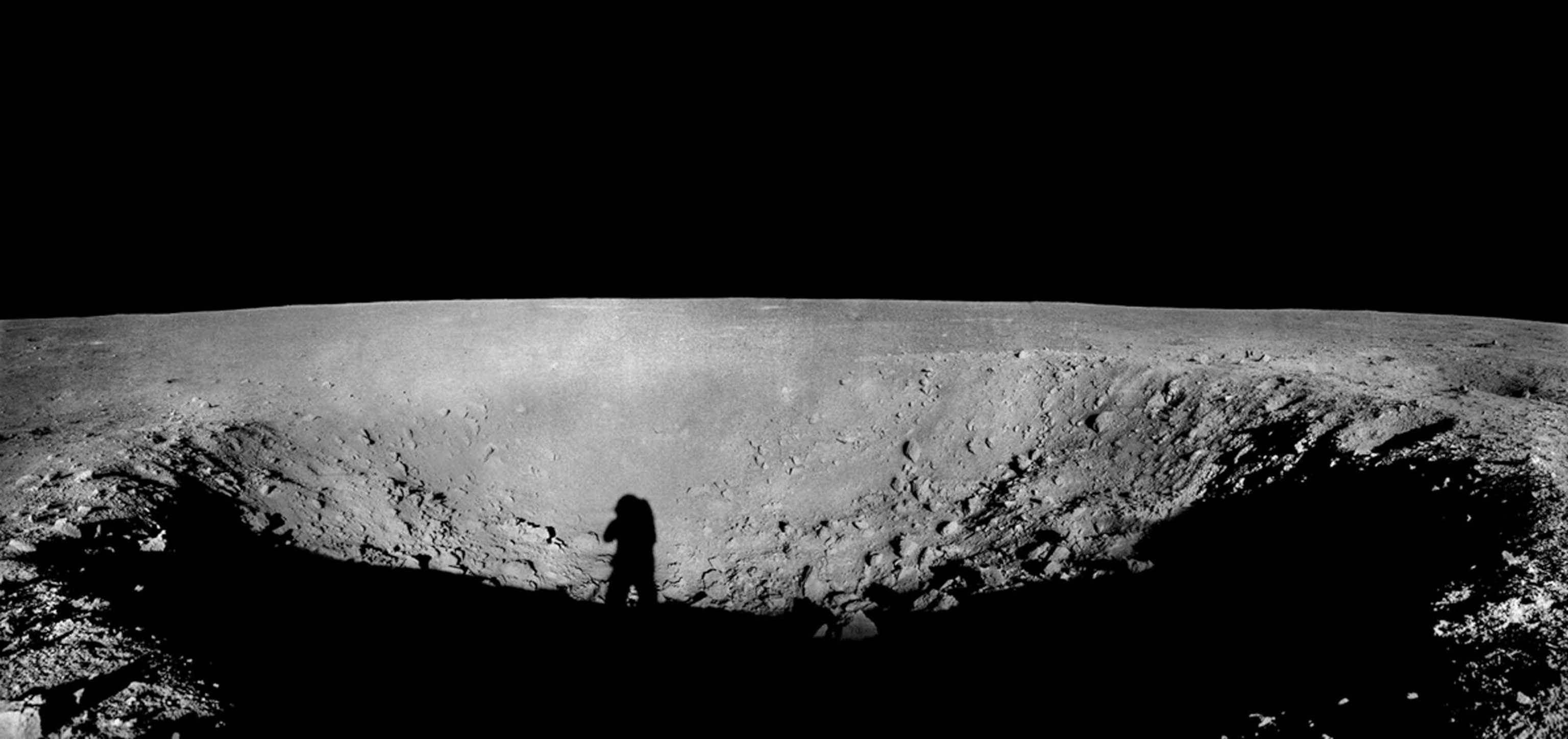


A gap in the record
However reasonable Saunders’ quality justification, Saunders’ initial motivation was to fill what he saw as a gap in the record. “For as long as I can remember I’ve been very conscious that something important was missing from the history books,” he says. “I wanted to see Neil Armstrong on the Moon—this pivotal moment in human history—but I couldn’t.”
Saunders explains that of the equipment in the notoriously weight-conscious lunar lander Eagle, the craft’s stripped-down Hasselblad was generally wielded by Armstrong himself, so most shots—including the famous ‘double horizon’ spacesuit shot—were of Buzz Aldrin. Not that you would know.
The anonymity of many of the moon images—a casualty of the reflective, gold-plated sun visor featured on the suit helmets—was something Saunders wanted to challenge, if he could. “Imagine when the first woman sets foot on the Moon with project Artemis in the next five years or so,” he says, ”and they return without a photograph of her.”
The first image Saunders worked on aimed to rectify this. Using frames of NASA’s original 16mm film shot by a Maurer movie camera from the lunar lander, he used a technique often used in astrophotography called stacking, which combines different – but near identical – images of a subject moving slower than the frame capture rate. For instance, footage of a person climbing down a ladder in low gravity being filmed at between 6 and 24 frames per second would yield dozens—even hundreds—of frames containing approximately the same image.

Where this became useful for Saunders is when you factor in noise. Both a casualty and benefit of film was that noise—that graininess often caused when photographing in low light—was organic and random, and would yield sharper areas of the images in some frames than others. By aligning and merging them using digital software— ‘stacking’—the resulting image offers a shot with dramatically more visible detail.
“It was the first time I decided to try applying this unusual stacking technique to this type of footage,” says Saunders of his method, which he applied to 16mm film images of Neil Armstrong at the foot of the Apollo 11 lunar module. “As I started to process it, I simply could not believe the level of detail I was able to reveal. I could see fine detail through his helmet even down to his eyelid—and it was recognisably Armstrong.”
In another photograph, enhanced from a single transparency, Buzz Aldrin’s face can be seen on the moon's surface in his full space suit regarding the camera with “a hint of a smile … as if to say, ‘did you get the shot?’”—a recognisably human moment in images previously full of wonder, but perhaps lacking in relatable emotion.
Saunders’ work gives a new clarity to some of the astronauts’ day-to-day moments. Some comprise over 1,000 stacked frames, and many exhibit an ethereal quality to terrestrial eyes—but perhaps represent what it was really like for the explorers in that unearthly realm. “The astronauts talk of the deepest black imaginable, contrasted with the brightest, white, unfiltered sunlight,” says Saunders. “In the airless environment there is no atmospheric haze. And [photographically] understanding influences on colour is very important—from casts on the film itself, to the type of window they shot through and the source of any reflected light.”
The astronauts talk of the deepest black imaginable, contrasted with the brightest, white, unfiltered sunlight.Andy Saunders
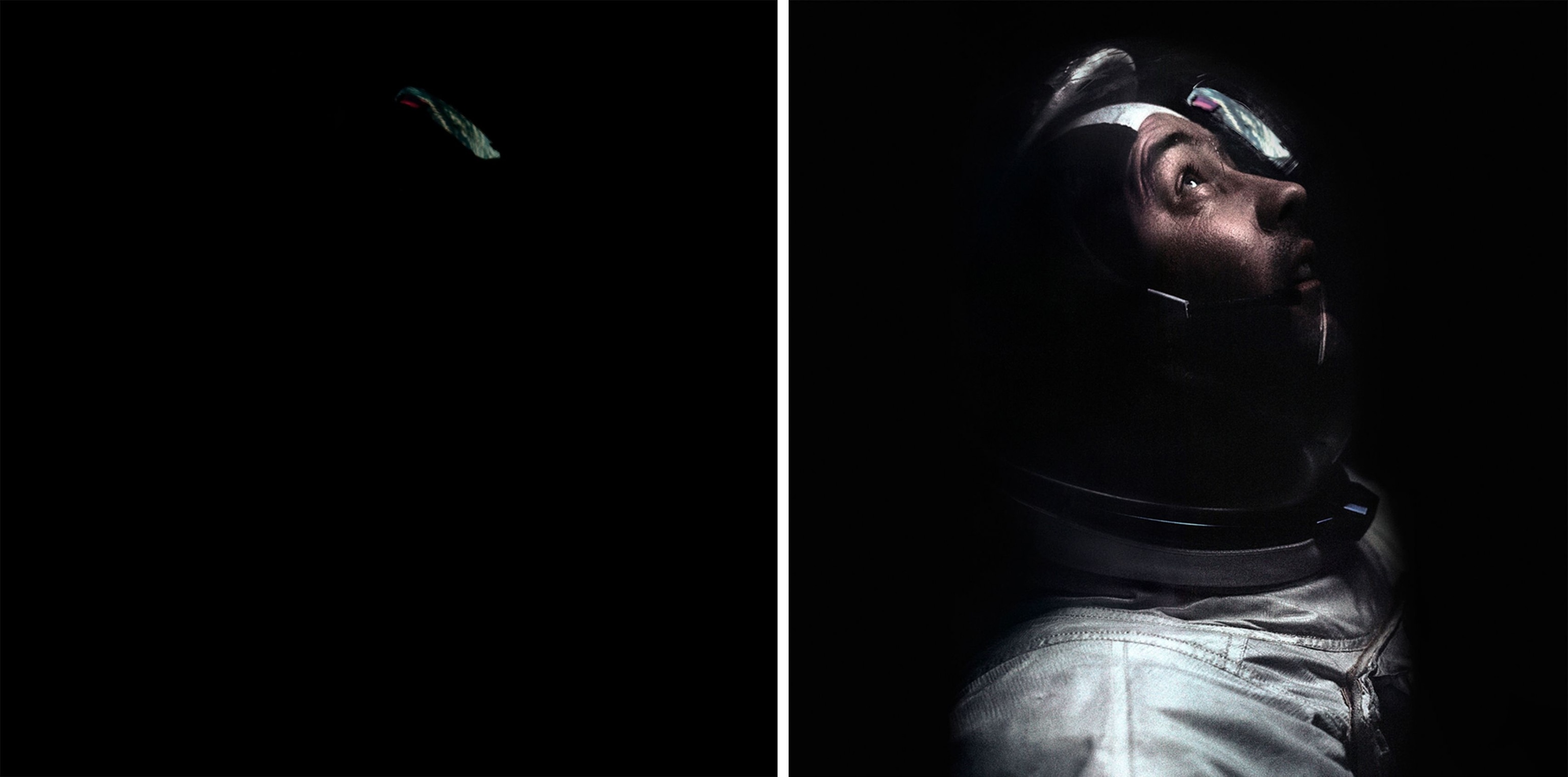
One of six of nine
Saunders is at pains to point out Apollo 11 forms only a part of the picture. “I want the book to remind people that there were nine missions to the Moon—and six of them landed.” Amongst these are shots from the ill-fated Apollo 13 mission, showing the exhausted astronauts resting as the stricken spacecraft limped back towards Earth, and crafting the makeshift devices they employed to clean the air of poisonous carbon dioxide as they went. Another haunting image shows the damage caused by the explosion that crippled it, captured with the moon tantalisingly out-of-reach in the background.

In all instances, what is clear is the skill with which not only Saunders has approached his task but that with which the astronauts used their occasionally unwieldy cameras to artistic result. “The astronauts were given Hasselblads to use at home, on vacations too. They were constantly taking photographs, to the point they were sick of it by the time their flight came around,” says Saunders. “The camera had no viewfinder, and they had to learn to point it in the general direction and still get the shot. There were also no automated features on the cameras for exposure or focus, for example. An extremely high proportion of the photographs were still right on the money.”

Saunders name-checks astronauts Bill Anders—who shot the famous Apollo 8 ‘Earthrise’ image—Al Worden and Alan Bean, who later became an artist, as notably good photographers. He adds that Apollo 9 “had some of the finest photography from the whole programme…despite never going to the Moon.”
There were scientific reasons for this skill-loading; snapshots from the largely unreachable vacuum of space onto a mysterious other world would be more than a record of a remarkable adventure, but would help further human knowledge and understanding. “Dave Scott was instrumental in persuading NASA to allow the inclusion of a huge, weighty 500mm lens on his Apollo 15 mission,” says Saunders. The addition caused “a reduction in abort fuel equal to the mass of the lens as a trade-off. The lens made it and took some astounding photographs.”
Now his task is completed, and with high praise from NASA as well as the astronauts themselves in the bag, Saunders is happy he’s done the job well. “Much of the feedback we’ve had from the images and the book is that there are so many moments that give people a chill,” he says.
“We can also finally see, after half a century, some of the most iconic and reproduced photographs of all time like never before. It’s how we should always have seen them.”
This story was adapted from the National Geographic U.K. website.

